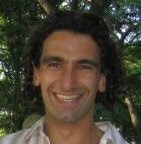The name of this blog is a local word that was once used to describes the waves on the outer reed in Tarawa, the capital of the equatorial island nation of Kiribati. Tarawa and the other 32 islands of Kiribati are coral atolls, low-lying circular chains of islands created entirely by corals.
An atoll is created by corals growing along the slopes of a sinking old oceanic volcano, a fascinating idea proposed by Charles Darwin during his famous voyages across the Pacific that was not actually confirmed until US scientists started drilling (and testing bombs) in the Marshall Islands in the 1950s. In short, the reef maintains itself near sea level, sand starts to collect, some seeds blow in, and you end up with a malleable ring of flat, narrow islands of sand, coral rock and a few trees all surrounding a shallow lagoon.
The islands in a developed atoll like Tarawa or others in Kiribati is protected - partly - from the erosive action of open ocean waves by a fringing or "outer" reef. When you visit a populated, claustorphobic atoll like Tarawa, you spend a lot of time looking at those waves and wondering about the future. That's why I called the blog Maribo.
Maribo's been on hiatus for six weeks while I was conducting field work in the namesake nation of Kiribati. Over the next few weeks, in addition to some of the usual news items, Maribo will feature stories about the reality - and the unreality - about climate change in what people assume is one of the most vulnerable places on the planet.
What's really happening in Kiribati? Is there evidence for sea level rise? Are other threats more prominent than climate change? What do the local people think? What can be done to help a low-lying nation cope with climate change? Stay tuned.
Monday, December 03, 2007
Re-opening: Climate change and Kiribati
Subscribe to:
Post Comments (Atom)



No comments:
Post a Comment